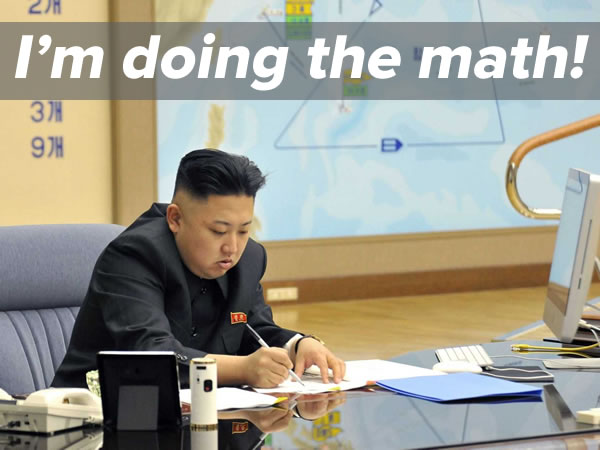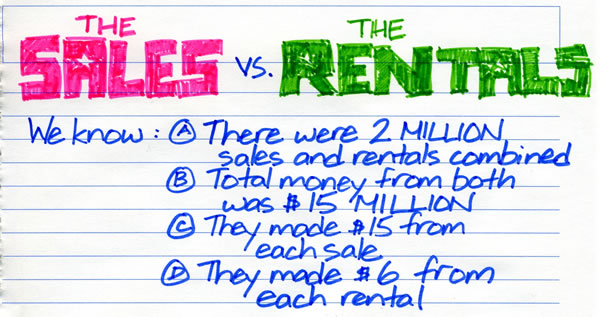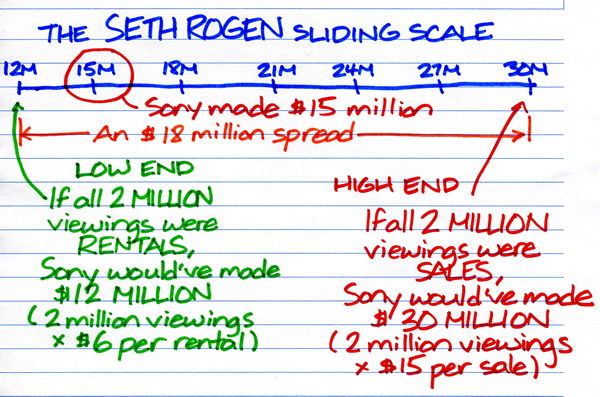
Eugene Stern, who blogs at Sense Made Here, describes himself as “interested in math and modeling and how they are used and taught in real life”. A friend of his pointed on Facebook to my recent post in which I did the math that the New York Times didn’t do when reporting on sales and rentals of The Interview.
He liked my post, and decided to do the math in a different way — a heuristic way that seems a little more intuitive, especially to people who might not be comfortable solving systems of linear equations. I’ve taken his reasoning and illustrated it, in the same style as my previous article.
Once again, here are the facts that we’re given:

Sony didn’t tell the New York Times how many of those 2 million viewing came from rentals and how many came from sales. However, we can do a little reasoning:

This gives us something to work with:

At the end of his proof, he writes:
The heuristic argument didn’t have any equations or unknowns, but at the heart of it we were still doing algebra!
The arguments aren’t exactly the same, and that’s OK: they both have their benefits, and one complements the other. The system of equations gives you a more systematic way of getting to the answer: you don’t have to guess (or make your way through some slightly twisted logic about averages). The heuristic argument gets you to the main point — more rentals than sales — more quickly and transparently. But, at their heart, they are both about using arithmetic operations (adding, subtracting, multiplying, dividing), and known relationships between quantities, to tease out even more information about those quantities. That’s algebra. And it’s valuable to be able to do it, one way or another.
Stern did a fantastic job. Some people had trouble buying into the solution I came up with using linear equations, but his heuristic approach has a “feel” to it that should convince even the biggest, most innumerate math-phobes. Well done, sir!

4 replies on “Eugene Stern shows another way to do the math that the New York Times didn’t”
Nice pictures — they’re very clear!
I was one of the rentals and I only made it half the way through before I gave up on what was really a pretty stupid movie. If we assume that most people make rational decisions about renting vs. buying based on their intended future use, can we infer that ⅚ of us probably had no intention of watching more than once or of sharing it with others. OK, lets round off and call it 80%, or even 75%. This is getting stupid so I think I will just quit.
But I am curious what the margins were for Sony. 15MM is not a lot compared to some openers but surely the margins are a lot better than my $10 (rounded) at the box office, and I gotta admit I would not have bothered to go if I had to do the whole theatre thing.
Again, NO algebra is needed. Simply posit that all the sales were from $15 items (or the other way round) — this gives you an excess of 15 mil that you know you didn’t get. Divide that by 6 and you get 15/6 which is the approximate amount of $6 items — remember all the numbers were given in the original as “roughly” or “approximate” amounts.
Much simpler, no algebra. None.
Oops, supposed to have written 15/9 (divide by the difference between 15 and 6). This is how my high school students would do it. No algebra. Easy.